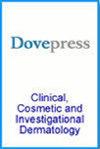老年性生殖器疣:免疫衰老和新的性接触?病例报告
IF 1.9
4区 医学
Q3 DERMATOLOGY
引用次数: 0
摘要
导言:生殖器疣(AGW)是由人类乳头瘤病毒(HPV),尤其是 6 型和 11 型引起的性传播感染(STI)。肛门尖锐湿疣的高发年龄段为 15-24 岁。然而,随着预期寿命的延长,全球老年人口显著增加。这种人口结构的变化与老年群体中性传播感染病例的增加成正比:报告了一例 75 岁男性 AGW 病例,该患者有勃起功能障碍用药史和近期性接触史。体检时,发现阴茎根部有色素沉着斑块,表面有疣状赘生物。组织病理学检查结果符合 AGW 的特征。此外,通过聚合酶链式反应(PCR)进行的人乳头瘤病毒基因分型显示,患者体内存在 6 型人乳头瘤病毒:讨论:衰老过程会导致老年人免疫功能下降,从而易受感染,包括性传播疾病。此外,与年轻人相比,老年人对性传播感染的易感性也有所不同。生理变化、性功能减退、对性传播疾病的认识不足以及拥有多个性伴侣等因素进一步增加了这一年龄组人群感染性传播疾病的风险:结论:性交是人类生活的重要组成部分。结论:性交是人类生活的重要组成部分,但随着年龄的增长,性功能往往会自然衰退。因此,许多老年病患者寻求各种解决方案,以保持老年期的性功能和性活动。由于性传播疾病可发生于任何年龄,因此早期发现和教育至关重要,尤其是对老年群体而言。关键词:肛门尖锐湿疣、老年、HPV、免疫衰老、性传播疾病本文章由计算机程序翻译,如有差异,请以英文原文为准。
Anogenital Warts in Geriatrics: Immunosenescence and New Sexual Contacts? A Case Report
Introduction: Anogenital warts (AGW) are sexually transmitted infections (STIs) caused by the human papillomavirus (HPV), particularly types 6 and 11. The highest incidence of AGW occurs in the age group of 15– 24 years. However, as life expectancy increases, there is a significant rise in the geriatric population worldwide. This demographic shift is directly proportional to the increasing number of STIs cases within the geriatric group.
Cases: A case of AGW was reported in a 75-year-old man who had a history of erectile dysfunction medication use and recent sexual contact. During the physical examination, a hyperpigmented plaque with a verrucous surface was observed at the base of the penis. The results of the histopathological examination were consistent with the characteristics of AGW. In addition, HPV genotyping, through polymerase chain reaction (PCR) showed the presence of HPV type 6.
Discussion: The aging process leads to a decline in immune function among geriatric individuals, which causes susceptibility to infections, including STIs. Moreover, the geriatric population has a different level of susceptibility to STIs compared to younger individuals. Factors such as physiological changes, decreased sexual function, low awareness of STIs, and having multiple sexual partners further increase the risk of STIs in this age group.
Conclusion: Sexual intercourse is an important component of the human life. However, the natural decline in sexual function due to the aging process often occurs with advancing age. As a result, many geriatrics seek various solutions in order to maintain sexual function and activity in old age. Since STIs can occur at any age, early detection and education are essential, particularly for the geriatric population.
Keywords: anogenital warts, geriatric, HPV, immunosenescence, sexually transmitted disease
Cases: A case of AGW was reported in a 75-year-old man who had a history of erectile dysfunction medication use and recent sexual contact. During the physical examination, a hyperpigmented plaque with a verrucous surface was observed at the base of the penis. The results of the histopathological examination were consistent with the characteristics of AGW. In addition, HPV genotyping, through polymerase chain reaction (PCR) showed the presence of HPV type 6.
Discussion: The aging process leads to a decline in immune function among geriatric individuals, which causes susceptibility to infections, including STIs. Moreover, the geriatric population has a different level of susceptibility to STIs compared to younger individuals. Factors such as physiological changes, decreased sexual function, low awareness of STIs, and having multiple sexual partners further increase the risk of STIs in this age group.
Conclusion: Sexual intercourse is an important component of the human life. However, the natural decline in sexual function due to the aging process often occurs with advancing age. As a result, many geriatrics seek various solutions in order to maintain sexual function and activity in old age. Since STIs can occur at any age, early detection and education are essential, particularly for the geriatric population.
Keywords: anogenital warts, geriatric, HPV, immunosenescence, sexually transmitted disease
求助全文
通过发布文献求助,成功后即可免费获取论文全文。
去求助
来源期刊

Clinical, Cosmetic and Investigational Dermatology
Medicine-Dermatology
CiteScore
2.80
自引率
4.30%
发文量
353
审稿时长
16 weeks
期刊介绍:
Clinical, Cosmetic and Investigational Dermatology is an international, peer-reviewed, open access journal that focuses on the latest clinical and experimental research in all aspects of skin disease and cosmetic interventions. Normal and pathological processes in skin development and aging, their modification and treatment, as well as basic research into histology of dermal and dermal structures that provide clinical insights and potential treatment options are key topics for the journal.
Patient satisfaction, preference, quality of life, compliance, persistence and their role in developing new management options to optimize outcomes for target conditions constitute major areas of interest.
The journal is characterized by the rapid reporting of clinical studies, reviews and original research in skin research and skin care.
All areas of dermatology will be covered; contributions will be welcomed from all clinicians and basic science researchers globally.
 求助内容:
求助内容: 应助结果提醒方式:
应助结果提醒方式:


